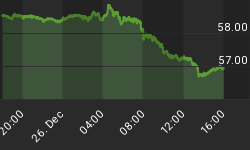ChartWorks
May 21, 2010
Technical observations of RossClark@shaw.ca
The anticipated decline into August-October is well under way. Our previous report established that a 21% to 25% drop was common going into the four-year cycle low. This targeted 940 on the S&P and 8670 on the Dow. The seven comparative midterm year examples (1934, '46, '62, '66, '90, '94 & '98) suggest that the multi-month action will come in a series of three or more waves of selling. The second wave is nearing completion.
 The decline to the closing low on the second leg down (labeled 3) that commenced from May 13th should be slightly larger than the initial move from the April 26th top to the May 6th low. (Due to the unusual activity on May 6th we are utilizing 1094 as the means of measurement, not 1066.) This provides a closing target of 1049 in the S&P. The interday decline could be as much a 138% of the decline into May 6th, offering a measurement of 1000.
The decline to the closing low on the second leg down (labeled 3) that commenced from May 13th should be slightly larger than the initial move from the April 26th top to the May 6th low. (Due to the unusual activity on May 6th we are utilizing 1094 as the means of measurement, not 1066.) This provides a closing target of 1049 in the S&P. The interday decline could be as much a 138% of the decline into May 6th, offering a measurement of 1000.
Once a low is established the next high (labeled 4) should be capped at a Fibonacci 38% to 62% retracement of the decline from the May 13th high of 1173 (labeled 2). The subsequent drop from there should be of a larger magnitude than either of the previous selloffs. From a technical perspective, any rally beyond 1173 would suggest that the pattern is developing more along the lines of May-June '98 with a broader top and the major selloff being delayed by a few weeks.


















